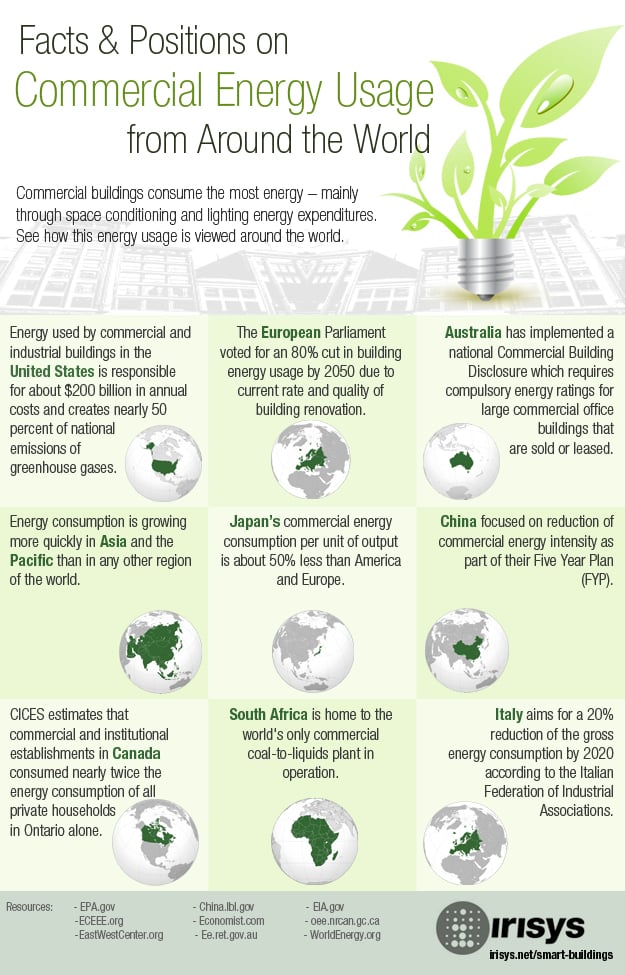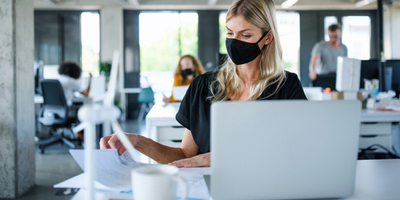3 key factors to enhance the employee experience as staff return to the workplace
As the first rays of light appear at the end of the tunnel, many businesses will be turning their thoughts to how to get employees safely - and happily - back to the office. This shift simply cannot be a case of hoping and expecting employees to adapt. Instead, business owners will need to invest in certain areas to help improve the employee experience, with occupancy data providing key metrics to help office life flow calmly.
Businesses will have to address the following three factors. First, employee confidence and anxiety around their health, safety and wellbeing. Next, how best to use the physical office space. Lastly, how new business and tech trends are helping enhance the employee experience.
1. Wellbeing
Employee wellbeing is a huge piece for employers, with many different ways of getting it right - and wrong. To begin with, you need to be sure you are meeting requirements and giving employees much-needed peace of mind in three essential areas.
Improving air quality
It is vital that employees are able to see that steps are being taken to improve air quality and safeguard their wellbeing. Integrating your HVAC system with occupancy sensors allows you to improve efficiency by switching it on only when someone is actually using the space. More importantly, it is one of the single best things you can do to improve employee wellbeing. A well-ventilated office is a happy and productive office. Boosting air quality can help employees feel more wakeful, reduce headaches and, of course, lessen the risk of transmission of viruses and sniffles.
According to a recent study, 80% of UK workers think poor air quality could be having an impact on their health.
Improving hygiene
Did you know that one in ten employees feel stressed out at the thought of sharing washrooms and other facilities upon their return to the office?
Occupancy data can be invaluable in helping you maintain a safe and clean environment, alerting cleaning staff to when there is a high level of traffic to the restroom and therefore when more attention is needed.
Not only this, but incorporating technology like desk sensors and desk hoteling (the “new hot-desking”) can streamline cleaning schedules by allowing desks that have been used to be disinfected before, being released for reservation again, improving the employee experience by showing them where they can find a clean and safe desk.
Maintaining social distancing
Staff toilets are confined spaces - occupancy data can also help you maintain the right levels of social distancing for as long as it is necessary to do so. This principle can be applied throughout your building, from canteens, auditoriums, meeting rooms and lobbies, to entire work floors.
2. Creating a building that facilitates ease of use for employees
In an ideal world, your workspace would be open, convenient, dynamic and inspiring - a place where great ideas could flow like great coffee. This may still be a way off for your business, but we’re telling you it pays to give staff a workplace designed with productivity in mind.
According to one study, four in ten office workers spend an average of 60 minutes each week searching for available desks, conference rooms or colleagues.
A building that has been laid out according to ease of use eliminates the need for employees to waste their precious time searching for the people and places they need, and dramatically cuts down the time spent queuing for lunch or to use facilities like the office gym. But how to achieve this?
- Creating a slick employee app, sharing the data needed for employees to make informed decisions and effectively plan their day - for example, by visiting onsite amenities during quiet periods.
- Combining sensors with a wayfinding app to help employees find each other.
- Make booking of meeting rooms efficient by using sensors to facilitate dynamic room booking and automated room release
- Provide desk booking or “hoteling” using desk sensors to give employees a more seamless check-in experience.
3. Provide them with a space that perfectly fits their needs
Ultimately, giving employees a great experience means giving them the workspace they need in 2021. There are essentials, like safety and efficiency, and nice-to-haves, like the aforementioned great coffee, yoga classes and high-tech auditoriums. But let’s not forget that people are returning to a very different world of work. The huge shifts we have seen over the past twelve months are no longer just about reacting to a global emergency, but about doing better by our people in the long term.
Due to the uptake in flexible working, people may be spending less time in the office. On the days they are coming in, they may be collaborating more - so give them the flexibility to do so. The best workspaces will be those where collaboration comes freely and naturally, using occupancy sensors where necessary to gain a better understanding of how your people like to work.
Thinking bigger, you could even incorporate occupancy sensors to identify space you are not using and do something amazing with it - indoor walking tracks to help facilitate walking meetings, for example. What could be more 2021 than boosting your wellbeing by meeting someone for a walk?
Want to know more about using occupancy sensors to help improve the experience your employees have when returning to the workplace? Download our Using Occupancy Data to Re-engage Employees With the Workplace guide, and gain some real-life examples of how this solution is being utilised.
Share this
You May Also Like
These Related Posts

Commercial Energy Usage from Around the World

[Press Release] True Occupancy engages Simon Carter of Anticus Consulting to help grow their occupancy analytics solution for smart buildings

How occupancy monitoring systems are helping employees return to the workplace
Connect with us
Need more information? Ready to get started? We're here to help, get in touch.


